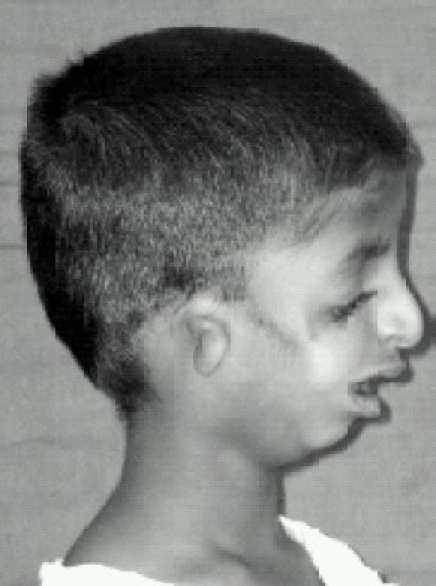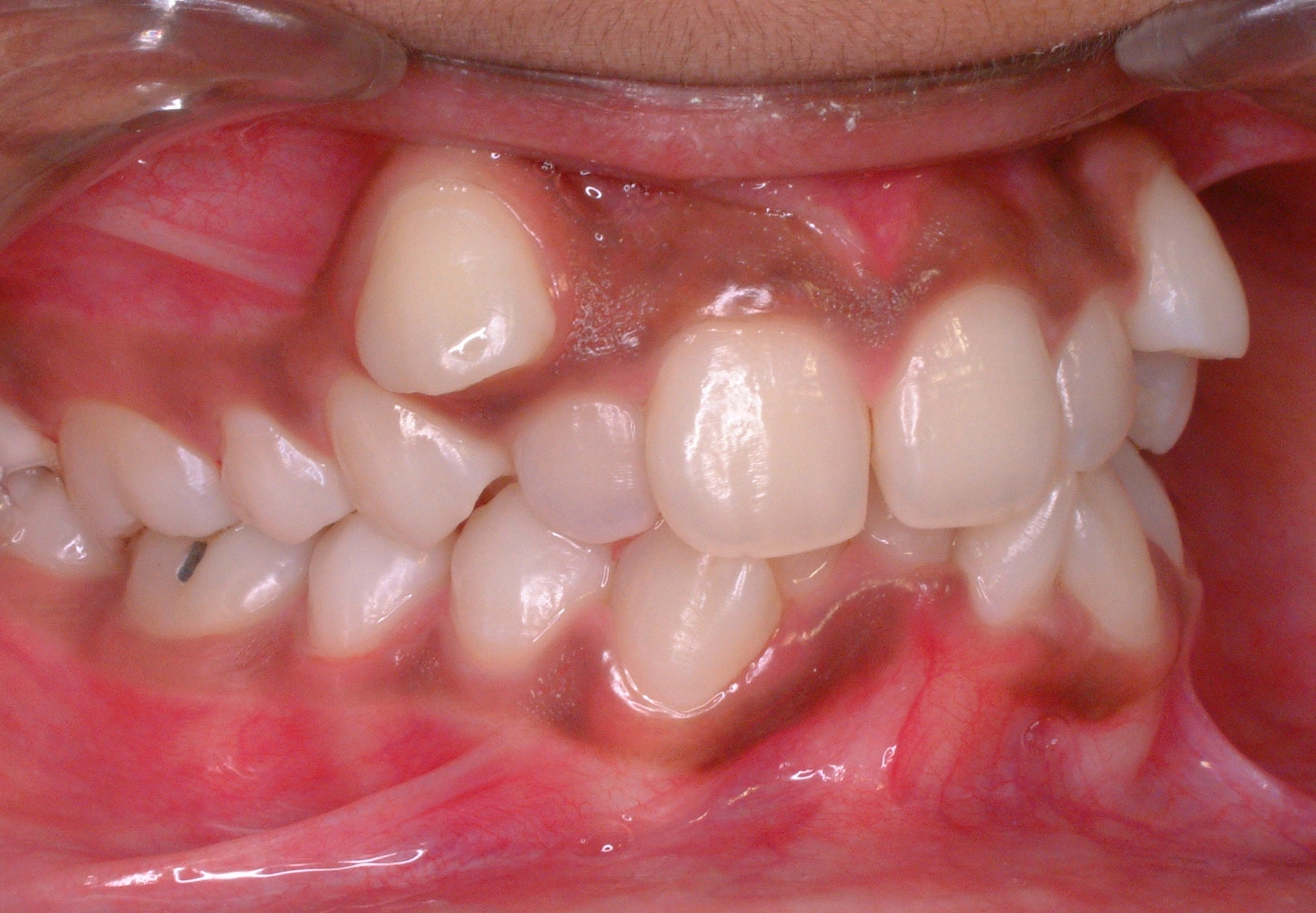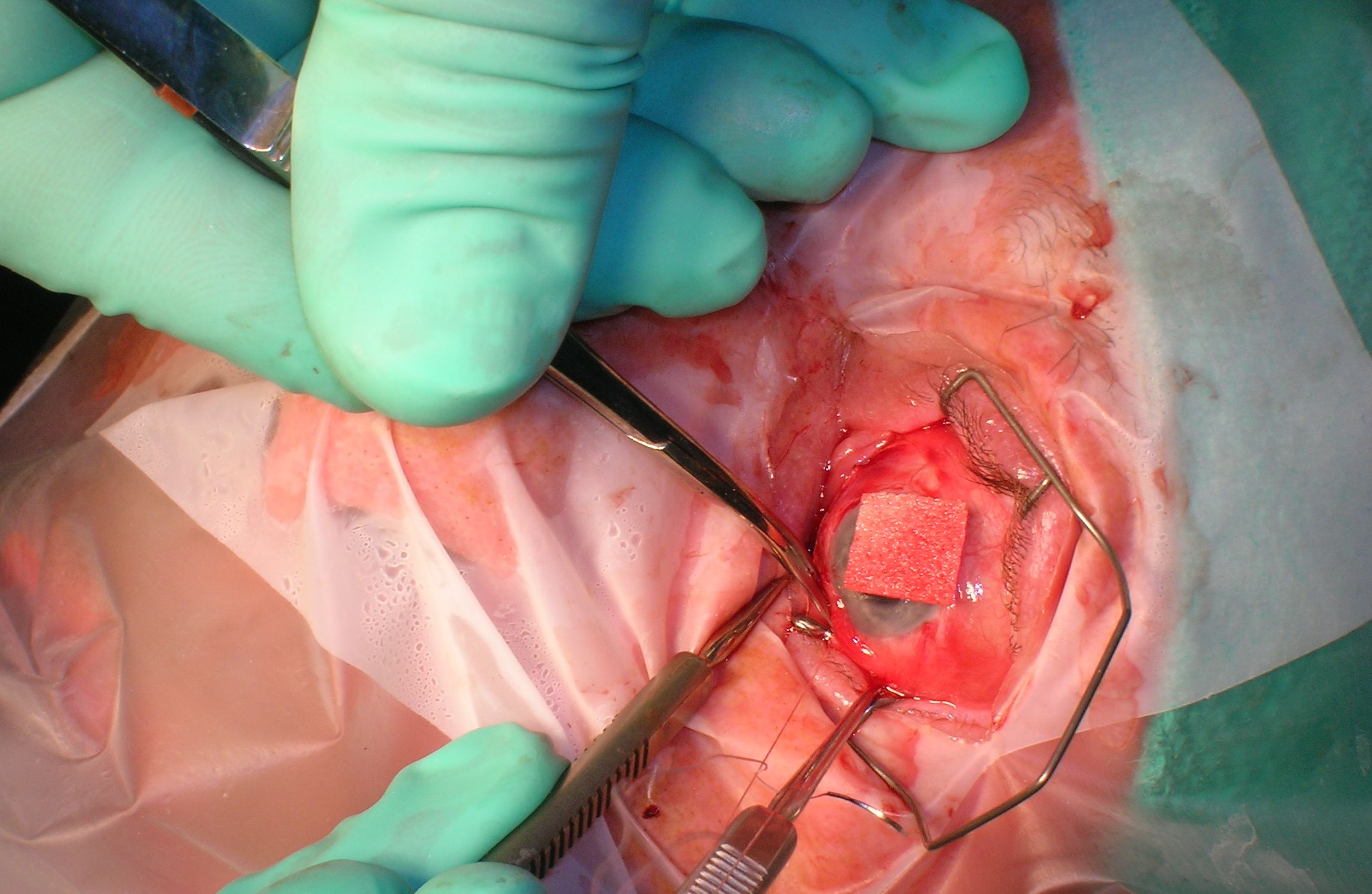|
Franceschetti–Klein Syndrome
Treacher Collins syndrome (TCS) is a genetic disorder characterized by deformities of the ears, eyes, cheekbones, and chin. The degree to which a person is affected, however, may vary from mild to severe. Complications may include breathing problems, problems seeing, cleft palate, and hearing loss. Those affected generally have normal intelligence. TCS is usually autosomal dominant. More than half the time it occurs as a result of a new mutation rather than being inherited. The involved genes may include ''TCOF1'', ''POLR1C'', or ''POLR1D''. Diagnosis is generally suspected based on symptoms and radiographs, X-rays, and potentially confirmation by genetic testing. Treacher Collins syndrome is not curable. Symptoms may be managed with reconstructive surgery, hearing aids, speech therapy, and other assistive devices. Life expectancy is generally normal. TCS occurs in about one in 50,000 people. The syndrome is named after Edward Treacher Collins, an England, English Surgery, s ... [...More Info...] [...Related Items...] OR: [Wikipedia] [Google] [Baidu] |
Medical Genetics
Medical genetics is the branch of medicine that involves the diagnosis and management of hereditary disorders. Medical genetics differs from human genetics in that human genetics is a field of scientific research that may or may not apply to medicine, while medical genetics refers to the application of genetics to medical care. For example, research on the causes and inheritance of genetic disorders would be considered within both human genetics and medical genetics, while the diagnosis, management, and counselling people with genetic disorders would be considered part of medical genetics. In contrast, the study of typically non-medical phenotypes such as the genetics of eye color would be considered part of human genetics, but not necessarily relevant to medical genetics (except in situations such as albinism). ''Genetic medicine'' is a newer term for medical genetics and incorporates areas such as gene therapy, personalized medicine, and the rapidly emerging new medical specia ... [...More Info...] [...Related Items...] OR: [Wikipedia] [Google] [Baidu] |
POLR1C
DNA-directed RNA polymerases I and III subunit RPAC1 is a protein that in humans is encoded by the ''POLR1C'' gene In biology, the word gene has two meanings. The Mendelian gene is a basic unit of heredity. The molecular gene is a sequence of nucleotides in DNA that is transcribed to produce a functional RNA. There are two types of molecular genes: protei .... Interactions POLR1C has been shown to interact with CD3EAP, POLR1E and POLR1D. References Further reading * * * * * * * * * * * * {{Gene-6-stub ... [...More Info...] [...Related Items...] OR: [Wikipedia] [Google] [Baidu] |
Conductive Hearing Loss
Conductive hearing loss (CHL) is a type of hearing impairment that occurs when sound waves are unable to efficiently travel through the outer ear, tympanic membrane (eardrum), or middle ear structures such as the ossicles. This blockage or dysfunction prevents sound from being effectively conducted to the inner ear, resulting in reduced hearing ability. Common causes include ear infections, fluid in the middle ear, earwax buildup, damage to the eardrum, or abnormalities in the ossicles. CHL can occur alone or alongside sensorineural hearing loss, in which case it is classified as mixed hearing loss. Depending on the underlying cause, conductive hearing loss is often treatable and sometimes reversible through medical interventions, such as medication, surgery, or assistive devices like hearing aids. However, chronic or permanent cases may require long-term management to improve hearing and communication abilities. Causes Common causes of conductive hearing loss include: Exter ... [...More Info...] [...Related Items...] OR: [Wikipedia] [Google] [Baidu] |
Microtia
Microtia is a congenital deformity where the auricle (external ear) is underdeveloped. A completely undeveloped auricle is referred to as anotia. Because microtia and anotia have the same origin, it can be referred to as microtia-anotia. Microtia can be unilateral (one side only) or bilateral (affecting both sides). Microtia occurs in 1 out of about 8,000–10,000 births. In unilateral microtia, the right ear is most commonly affected. It may occur as a complication of taking Accutane (isotretinoin) during pregnancy. Classification According to the Altman-classification, there are four grades of microtia: *Grade I: A less than complete development of the external ear with identifiable structures and a small but present external ear canal *Grade II: A partially developed ear (usually the top portion is underdeveloped) with a closed stenotic external ear canal producing a conductive hearing loss. *Grade III: Absence of the external ear with a small peanut-like vestige structu ... [...More Info...] [...Related Items...] OR: [Wikipedia] [Google] [Baidu] |
Auricle (anatomy)
The auricle or auricula is the visible part of the ear that is outside the head. It is also called the pinna (Latin for 'wing' or ' fin', : pinnae), a term that is used more in zoology. Structure The diagram shows the shape and location of most of these components: * ''antihelix'' forms a 'Y' shape where the upper parts are: ** ''Superior crus'' (to the left of the ''fossa triangularis'' in the diagram) ** ''Inferior crus'' (to the right of the ''fossa triangularis'' in the diagram) * ''Antitragus'' is below the ''tragus'' * ''Aperture'' is the entrance to the ear canal * ''Auricular sulcus'' is the depression behind the ear next to the head * ''Concha'' is the hollow next to the ear canal * Conchal angle is the angle that the back of the ''concha'' makes with the side of the head * ''Crus'' of the helix is just above the ''tragus'' * ''Cymba conchae'' is the narrowest end of the ''concha'' * External auditory meatus is the ear canal * ''Fossa triangularis'' is the depression ... [...More Info...] [...Related Items...] OR: [Wikipedia] [Google] [Baidu] |
Malocclusion
In orthodontics, a malocclusion is a misalignment or incorrect relation between the teeth of the upper and lower dental arches when they approach each other as the jaws close. The English-language term dates from 1864; Edward Angle (1855–1930), the "father of modern orthodontics", popularised it. The word derives . The malocclusion classification is based on the relationship of the mesiobuccal cusp of the maxillary first molar and the buccal groove of the mandibular first molar. If this molar relationship exists, then the teeth can align into normal occlusion. According to Angle, malocclusion is any deviation of the occlusion from the ideal. However, assessment for malocclusion should also take into account aesthetics and the impact on functionality. If these aspects are acceptable to the patient despite meeting the formal definition of malocclusion, then treatment may not be necessary. It is estimated that nearly 30% of the population have malocclusions that are cat ... [...More Info...] [...Related Items...] OR: [Wikipedia] [Google] [Baidu] |
Glossoptosis
Glossoptosis is a medical condition and abnormality which involves the downward displacement or retraction of the tongue. This mostly affects infants and children. It may cause non-fusion of the hard palate, causing cleft palate. It can also cause difficulties with feeding and upper airway obstructions. Glossoptosis could be a symptom of a birth defect from Pierre Robin Syndrome. It can also arise with Down syndrome and cerebral palsy. Signs and symptoms Glossoptosis is characterized by an abnormal posterior placement of the tongue like a downward displacement or retraction. This characteristic causes other symptoms to arise because of the abnormality. Glossoptosis may cause upper airway obstruction which can lead to infants not getting enough oxygen. Not only may they not get enough oxygen they most likely will experience shortness of breath and struggle to breathe. Not being able to breathe properly can lead to other difficulties like struggling to breastfeed or even eat ... [...More Info...] [...Related Items...] OR: [Wikipedia] [Google] [Baidu] |
Zygomatic Bone
In the human skull, the zygomatic bone (from ), also called cheekbone or malar bone, is a paired irregular bone, situated at the upper and lateral part of the face and forming part of the lateral wall and floor of the orbit, of the temporal fossa and the infratemporal fossa. It presents a malar and a temporal surface; four processes (the frontosphenoidal, orbital, maxillary, and temporal), and four borders. Etymology The term ''zygomatic'' derives from the Ancient Greek , ''zygoma'', meaning "yoke". The zygomatic bone is occasionally referred to as the zygoma, but this term may also refer to the zygomatic arch. Structure Surfaces The ''malar surface'' is convex and perforated near its center by a small aperture, the zygomaticofacial foramen, for the passage of the zygomaticofacial nerve and vessels; below this foramen is a slight elevation, which gives origin to the zygomaticus muscle. The ''temporal surface'', directed posteriorly and medially, is concave, prese ... [...More Info...] [...Related Items...] OR: [Wikipedia] [Google] [Baidu] |
Micrognathism
Micrognathism is a condition where the jaw is undersized. It is also sometimes called mandibular hypoplasia. It is common in infants, but is usually self-corrected during growth, due to the jaws' increasing in size. It may be a cause of abnormal tooth alignment and in severe cases can hamper feeding. It can also, both in adults and children, make intubation difficult, either during anesthesia or in emergency situations. Causes According to the NCBI, the following conditions feature micrognathism: * 11q partial monosomy syndrome * 3-methylglutaconic aciduria, type VIIB * 46,XY sex reversal 4 * 4p partial monosomy syndrome * Achard syndrome * Acrofacial dysostosis Cincinnati type * Acrofacial dysostosis Rodriguez type * Acrofacial dysostosis, Catania type * Acromegaloid facial appearance syndrome * Adams-Oliver syndrome 2 * Agnathia- otocephaly complex * ALG1-congenital disorder of glycosylation * Alveolar capillary dysplasia with pulmonary venous misalignment * Ami ... [...More Info...] [...Related Items...] OR: [Wikipedia] [Google] [Baidu] |
Ophthalmology
Ophthalmology (, ) is the branch of medicine that deals with the diagnosis, treatment, and surgery of eye diseases and disorders. An ophthalmologist is a physician who undergoes subspecialty training in medical and surgical eye care. Following a medical degree, a doctor specialising in ophthalmology must pursue additional postgraduate residency training specific to that field. In the United States, following graduation from medical school, one must complete a four-year residency in ophthalmology to become an ophthalmologist. Following residency, additional specialty training (or fellowship) may be sought in a particular aspect of eye pathology. Ophthalmologists prescribe medications to treat ailments, such as eye diseases, implement laser therapy, and perform surgery when needed. Ophthalmologists provide both primary and specialty eye care—medical and surgical. Most ophthalmologists participate in academic research on eye diseases at some point in their training and many inc ... [...More Info...] [...Related Items...] OR: [Wikipedia] [Google] [Baidu] |
Surgery
Surgery is a medical specialty that uses manual and instrumental techniques to diagnose or treat pathological conditions (e.g., trauma, disease, injury, malignancy), to alter bodily functions (e.g., malabsorption created by bariatric surgery such as gastric bypass), to reconstruct or alter aesthetics and appearance (cosmetic surgery), or to remove unwanted tissue (biology), tissues (body fat, glands, scars or skin tags) or foreign bodies. The act of performing surgery may be called a surgical procedure or surgical operation, or simply "surgery" or "operation". In this context, the verb "operate" means to perform surgery. The adjective surgical means pertaining to surgery; e.g. surgical instruments, operating theater, surgical facility or surgical nurse. Most surgical procedures are performed by a pair of operators: a surgeon who is the main operator performing the surgery, and a surgical assistant who provides in-procedure manual assistance during surgery. Modern surgical opera ... [...More Info...] [...Related Items...] OR: [Wikipedia] [Google] [Baidu] |







